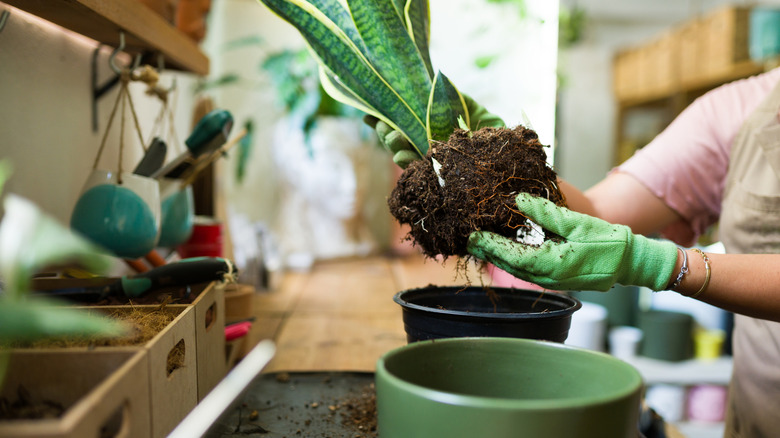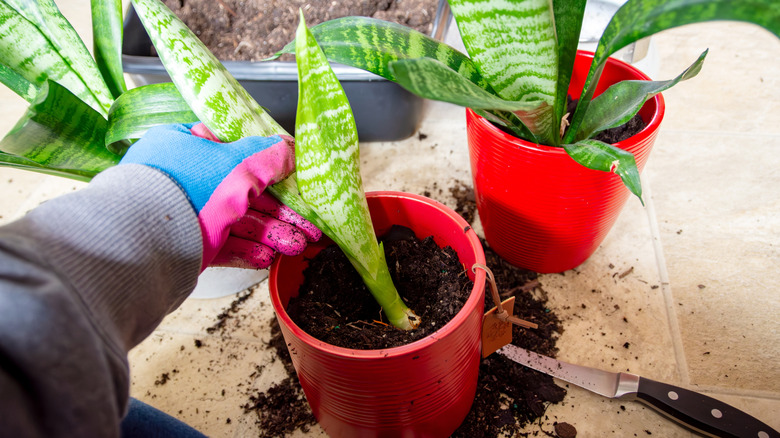How To Divide Snake Plants Without Damaging The Roots
Understanding how to divide snake plants (Dracaena spp.) without harming their roots starts with considering why roots matter in the first place. Roots store energy, which can help plant divisions recover after replanting. This is why it's so important that they aren't damaged in the division process. There are plenty of snake plant varieties that are perfect for growing in your home and garden, but they are often propagated as leaf cuttings instead of being divided with their roots. Because snake plants form clumps that can produce multiple emerging shoots, though, they benefit from occasional separation.
Division works best when the plant is in its natural rest period. You will know it's in a resting state because it will stop growing and require less water. Before you start the separation process, it helps to prepare the plant by ensuring the soil is slightly moist. That moisture keeps the roots flexible. Don't overwater your snake plant, though; it only needs watering when dry. Plants respond best when the soil is easier to work through and the root ball stays intact.
Division is considered one of the quickest ways to propagate plants that grow from rhizomes, giving you new, rooted plants immediately without waiting for leaf cuttings to take hold. However, if you do decide to take leaf cuttings for snake plants, one common mistake to avoid when propagating them is not letting the cut edge dry. While leaf cuttings may seem easier, division ensures every new plant begins with an established root system.
Protect the roots when dividing
The first step in carefully dividing a snake plant is to remove it from its container while preserving the entire root ball and keeping it from drying out. Once the plant is lifted, loose soil can be gently shaken away so the rhizomes and attached roots are easy to see. Each section you divide should have stems at the base and its own set of roots; healthy roots will look firm rather than dried or broken. Using your fingers or a clean knife, separate the clump along the points where the rhizomes branch, and avoid unnecessary cutting.
Some divisions may resist coming apart, especially on older plants. If the roots are compacted, you can pry apart the mass, but work slowly to preserve the roots. Each piece should include visible growth points, and any declining or dead central tissue should be discarded. Replant each section in fresh, well-draining potting media, and remember to look out for signs that it's time to repot your trusty snake plant as it grows, which include yellowing leaves or lack of growth and dried-out and nutrient-deficient soil.
After replanting, water each of your individual snake plants and protect them from extreme conditions like too much sunlight. Transplant shock, which can lead to plants wilting and their stems bending, is less likely to occur in plants that are divided without tearing the roots. With careful treatment of the roots, you'll be able to easily expand the number of snake plants in your collection.

